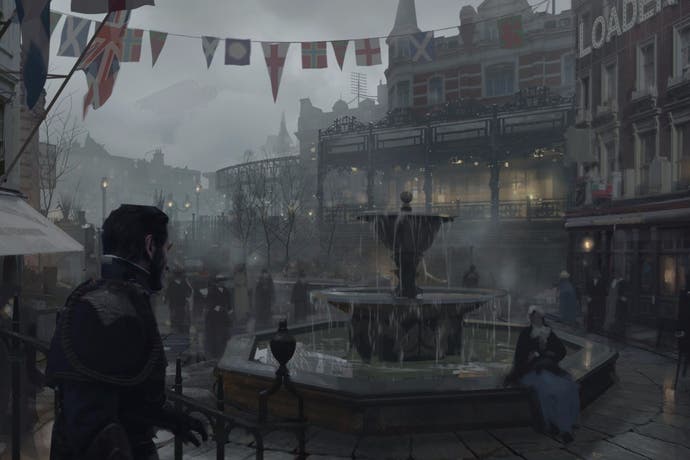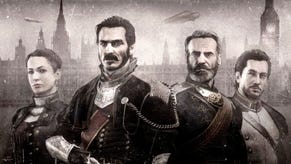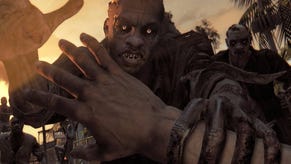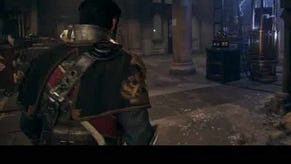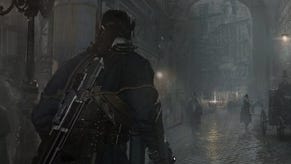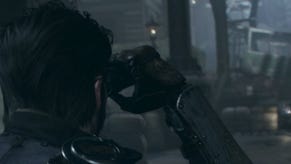Ready at Dawn reflects on The Order: 1886's successes and failures
The little flop that could.
Just over a year ago Sony launched one of the best looking console games of the modern era with Ready at Dawn's narrative-heavy third-person steampunk shooter The Order: 1886. It was a technical marvel for spring 2015 and one that Digital Foundry editor Richard Leadbetter called "a milestone in the development of next-gen visuals." Indeed it still looks mightily impressive 16 months on.
Yet for all its whiz-bang glamour, The Order: 1886 was met with a lukewarm critical reception and sales that only modestly made the charts upon launch. Given all the hype Sony pushed upon this pristine monument to the PS4, it would be easy to assume The Order was a colossal failure. Maybe even a misfire capable of crumbling the studio behind it. Nothing could be further from the truth.
Ready at Dawn is alive and well (I would know, having visited its Irvine, California headquarters last week) and its future is promising. Chief creative officer and co-founder Ru Weerasuriya confirms that the studio currently has three titles in development: the just announced physics-based brawler De-formers, an unannounced Oculus Rift-exclusive title, and a mysterious AAA game in pre-production. Weerasuriya can't reveal the platform (or possibly platforms) or publisher of this unannounced blockbuster, nor can he confirm if it's a new IP, but he does tell us about 20 staffers are working on De-formers full-time with a larger team on the Oculus title and the rest on the AAA game with more to join as other projects near completion.
When asked about The Order's middling reception (currently with a Metacritic score of 64), Weerasuriya seems more bemused than offended by the whole episode. To him The Order's tepid launch wasn't a letdown, but rather a means to unveil a technical showcase he remains proud of to this very day.
Part of this is due to the team's size. Ready of Dawn was - and importantly still is - comprised of roughly 100 staffers. That may sound like a lot, but is squat compared to the dev teams on other blockbusters. "We stayed a small team until the end of that project," Weerasuriya says. "People didn't know that, but we were probably a quarter to a fifth the size of most other AAA teams. For us it's a proud moment. Like we broke through certain barriers when it came to technology."
Furthermore, Weerasuriya notes that The Order was the rare game where the Metacritic user review average was significantly higher than the critical average. "Often times I see Metacritic player scores being usually 20 or 30 points under the critics' score. That's most games, actually. It's funny to see that our scores were at one point the other way around," he says. "Our critics score was actually lower than the user score. And then at one point it balanced out, but we broke certain known trends when it came to that kind of stuff."
But perhaps the main reason Weerasuriya and co. are so proud of The Order is due to the accolades the studio received within the industry. "We're friendly with most other developers out there and the biggest compliments came from those guys," he boasts. "We were put in the same field as a lot of studios out there, although we came from a more humble, smaller background. The compliments we got from internal teams, like Naughty Dog, that was pretty cool to hear. They've been really, really cool about that and how it influenced and inspired them."
And it wasn't just Naughty Dog, nor was the praise limited to friends. Weerasuriya recalls that Hideo Kojima was impressed by the studio's mocap work - something Ready at Dawn is especially proud of given that it was the developer's first stab at motion capture. The studio even bested its competitors in winning the Visual Effects Society Awards for Outstanding Visual Effects in a Real-Time Project.

This isn't the first time I've heard immense praise for The Order: 1886 in the development community. The Vanishing of Ethan Carter writer and former game critic Tom Bissell claimed on the Shall We Play a Game podcast that there was a huge divide between what his critic friends thought of The Order and what game developers thought of it.
"I thought it was really technically astounding," Bissell said at the time. "I think anyone who's interested in digital art, or animation, or world-building, or just lighting - whether cinematic or virtual - should play this game." Thusly, he dubbed The Order: 1886 a "developer's game."
When asked about the divide between how critics and fellow developers appraised The Order, Weerasuriya exclaims "It was like night and day!"
"We saw the response from internal people, like developers, and it was completely different than critics. We were like 'how could this be so far apart?' We expected that a little bit, but we didn't expect that split."
On paper The Order was a letdown, both with critics and retailers, but those working in game development viewed Ready at Dawn as technical wizards after the game's launch. After all, tasks in AAA tend to be very specific. If it's your entire job to focus solely on clothing physics, then a competitor releases a title with immaculate execution of this, you're going to take notice. Ready at Dawn's blockbuster debut may not have set the world on fire, but it certainly succeeded in showcasing the studio's painstaking craftsmanship. In a weird way The Order: 1886 became quite possibly the industry's most prestigious flop.
